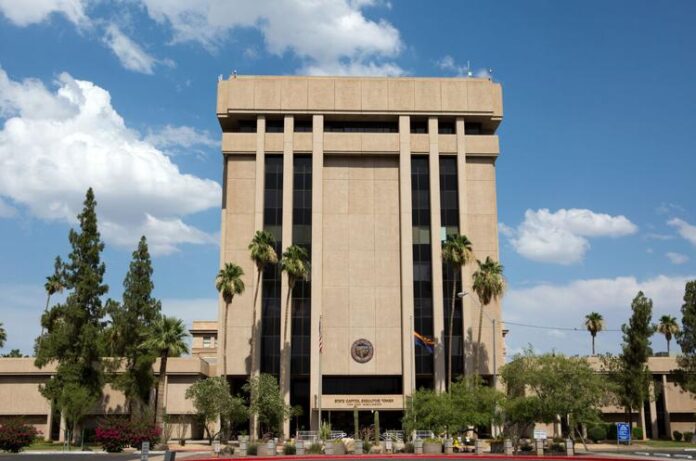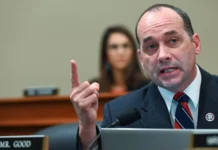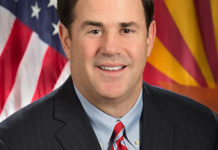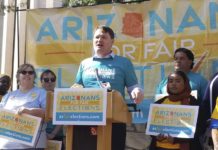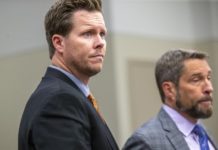A highly-contentious two days of debate has given Gov. Katie Hobbs her desired budget compromise.
Hobbs negotiated largely with Republican leadership in crafting the $18 billion budget package. Republicans accused Democrats of failing to offer priorities to negotiators. It includes dozens of small appropriations targeted at individual districts, $150 million added to the Housing Trust Fund, increased one-time and ongoing K-12 funding, $60 million for the Homeless Shelter and Services Fund, more than $600 million in transportation funding and various other budget lines.
Some of the most high-pitched arguments against the budget came amid the education portion. Democratic lawmakers said the budget failed to cap the Empowerment Scholarship Account program.
“It is irresponsible to let this runaway train continue,” said Rep. Judy Schwiebert, D-Phoenix. “We need to pause.”
The Empowerment Scholarship Account program allows any resident with a school-aged child to receive 90% of the state funds their attendance would bring to their public school district and use it to attend the school of their choosing. The number of participants has increased significantly in recent months, eclipsing 54,000 students in the program as of May.
House Speaker Ben Toma, R-Peoria, refuted claims that the program would send taxpayer dollars to unaccountable private institutions.
“If any of this were true, why would 55,000 families choose this option as the best fit for their children,” he asked. “I trust parents.”
Democrats maintained that the program is siphoning public school funding when students go to a private school of a parent’s choosing.
“[My constituents] and I are concerned about the massive hole in Arizona’s budget caused by the universal ESA alt-schools voucher fiasco, a program that rivals the size of our largest school district with over 54,000 students enrolled – over 80% of which were never enrolled in a public school,” she said.
While the ratio of students using ESAs was 80% in favor of students already enrolled in private schools, it’s no longer the case. Christine Accurso, who manages the program for the Department of Education, told The Center Square in February that 49% of students whose parents applied for an ESA were previously attending a public school district.
Another bill allowed for a one-time lifting of the state’s constitutional limit on public school district funding. Lifting of the aggregate expenditure limit enables school districts to spend the additional appropriations in the budget.
The package of bills now heads to Gov. Hobbs’ desk for consideration.
“I’m glad the House passed the bipartisan budget, and I look forward to signing it into law,” the governor said. “Not everybody got what they wanted, but I’m thankful legislative leaders were able to set aside their differences, compromise, and support a bipartisan deal that makes historic investments in affordable housing, builds roads, bridges, and public transit, expands access to health insurance for Arizona’s children and creates critical new ESA accountability measures.”
Republished with the permission of The Center Square.


